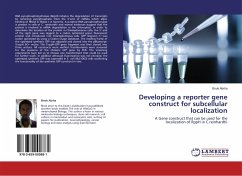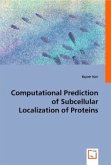RNA pyrophosphohydrolase (RppH) initiates the degradation of transcripts by removing pyrophosphate from the 5'-end of mRNAs which allow binding of RNase E/ RNase J in bacteria. A putative RNA pyrophosphorylase is present in cells of C. reinhardtii and several evidences suggest that the protein is involved in mRNA degradation in the chloroplast. In order to determine the location of the protein in Chlamydomonas cells, the 5' end of the rppH gene was tagged to a codon optimized green fluorescent protein and introduced into Chlamydomonas cells. GFP (Zsgreen 1) was codon optimized by using a Codon Usage Database. The reading frame of the optimized synthetic GFP was adjusted and cloned into the pBluescript-5'rppH SK+ vector. The 5'rppH-GFP gene fragment was then cloned into three vectors. All constructs were verified. Transformants were screened for the presence of the chimeric GFP gene by PCR. The screening experiments have led us to choose one transformant that could be used for further work. In addition although fluorescence was not checked, the optimized synthetic GFP was expressed in E. coli (BL21DE3) cells confirming the functionality of the synthetic GFP construct in vivo.








